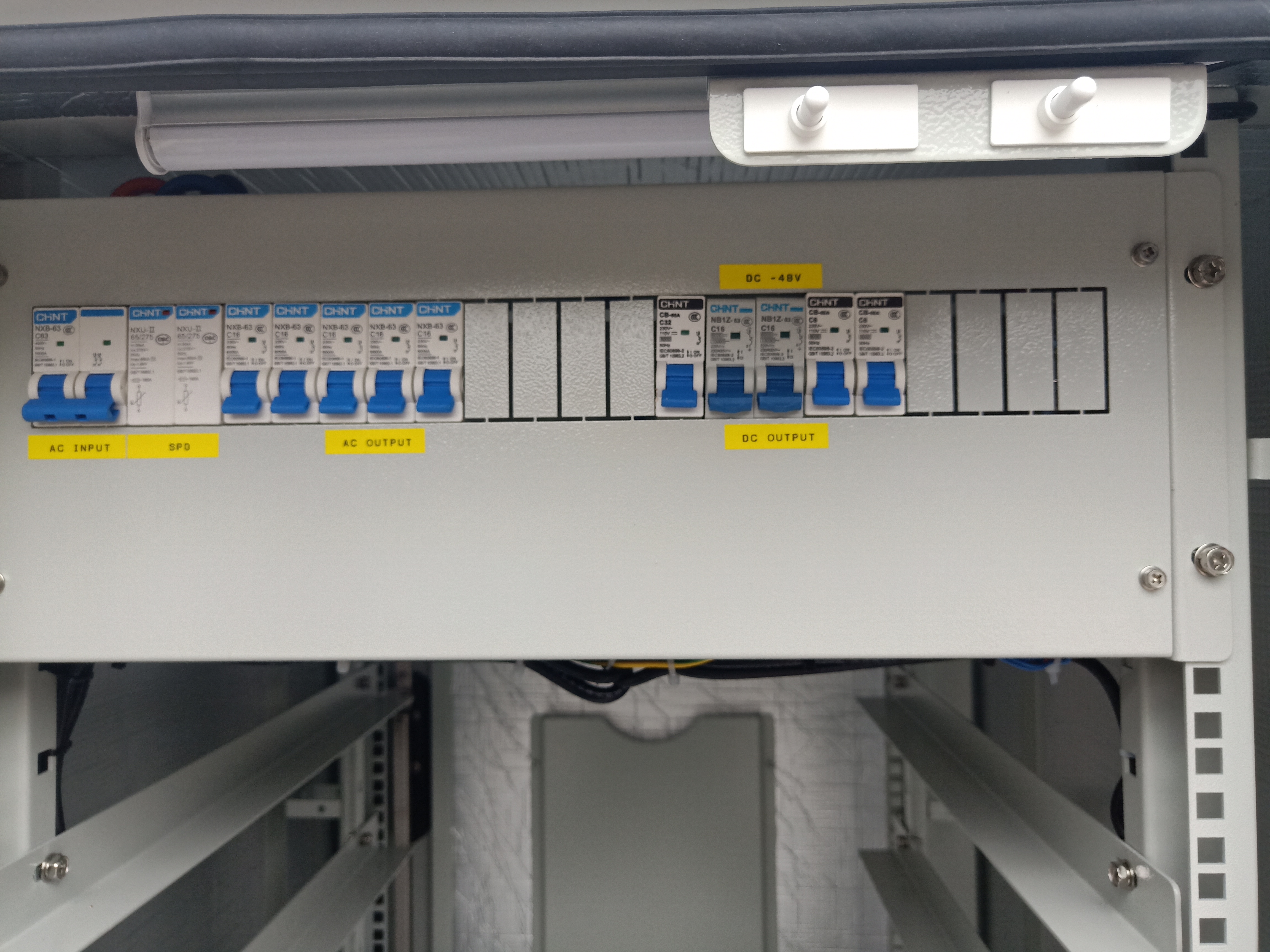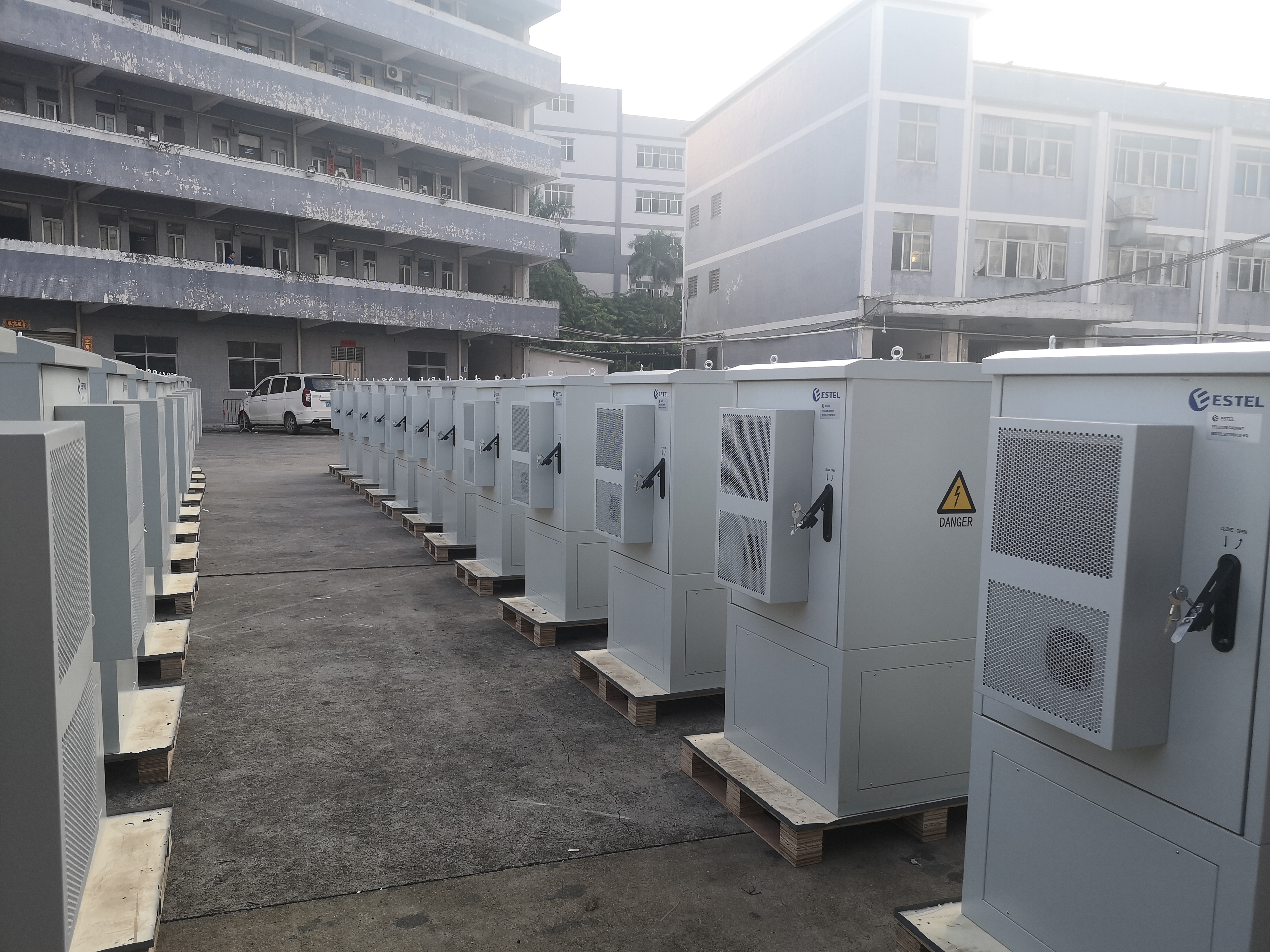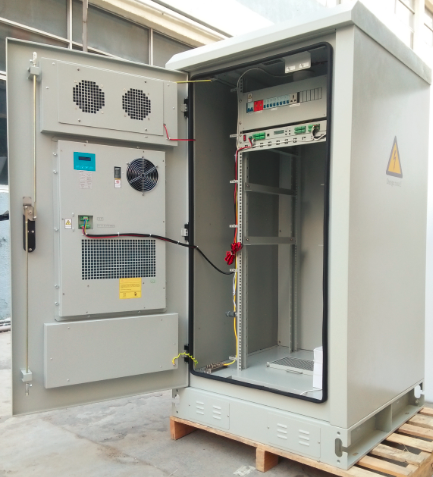Future-Ready Outdoor Cabinets for 5G and Beyond

The rapid expansion of 5G networks has made outdoor communication cabinets essential for modern telecommunications. These cabinets protect critical equipment from extreme weather, UV rays, and high winds, ensuring uninterrupted performance. Their modular designs allow you to scale and customize them for future upgrades without major modifications. Equipped with built-in power and cooling systems, they maintain smooth operations even in challenging conditions.
The market for outdoor cabinets and enclosures reflects their growing importance. In 2022, it was valued at $3.8 billion, with projections reaching $5.1 billion by 2027, growing at a 6.4% CAGR. This growth highlights the demand for durable, scalable solutions to support 5G infrastructure.
Key Takeaways
Outdoor communication cabinets are essential for protecting telecommunications equipment from harsh environmental conditions, ensuring reliable performance and longevity.
Modular designs allow for easy customization and scalability, enabling upgrades to accommodate future 5G infrastructure without extensive modifications.
Advanced cooling technologies, including passive and active systems, are crucial for managing heat and maintaining optimal equipment performance in extreme conditions.
Eco-friendly materials and energy-efficient designs are becoming increasingly important, reducing environmental impact while ensuring durability and compliance with sustainability standards.
Integrating smart monitoring features and AI-driven technologies enhances operational efficiency, allowing for real-time diagnostics and predictive maintenance to minimize downtime.
Challenges in Outdoor Communication Cabinets
Environmental Challenges
Weather resistance and extreme conditions
Outdoor communication cabinets face constant exposure to harsh environmental conditions. Extreme temperatures, moisture, and dust can compromise their performance. For instance, high heat can cause equipment to overheat, while moisture and dust may lead to short circuits or reduced efficiency. You need cabinets with advanced weather resistance to ensure long-term reliability.
Energy consumption also becomes a concern. Many cabinets rely on energy-intensive materials like steel and aluminum, which are difficult to recycle. This not only increases costs but also impacts the environment. Additionally, placing cabinets in sensitive areas can disrupt local ecosystems. Choosing eco-friendly materials and designs can help mitigate these challenges.
Corrosion and material degradation
Corrosion is another major issue. Prolonged exposure to rain, humidity, and pollutants can degrade materials over time. This affects the structural integrity of outdoor telecom enclosures. To combat this, manufacturers now use corrosion-resistant coatings and durable materials. These innovations extend the lifespan of cabinets and reduce maintenance costs.
Heat Management Issues
High temperatures and equipment performance
Heat management is critical for outdoor telecom cabinets. Internal heat from electronic equipment, combined with solar heat loading, can lead to overheating. This reduces the performance and lifespan of your equipment. Cabinets must balance cooling methods to address these challenges. For example, passive cooling systems can reduce energy consumption, while active cooling systems handle high-performance needs.
Limitations of traditional cooling systems
Traditional cooling systems often fall short in extreme environments. They may struggle with temperature swings, humidity, and dust. Additionally, noise and aesthetic restrictions in residential areas limit their use. Modern designs now incorporate advanced cooling technologies to overcome these limitations. These systems ensure efficient heat dissipation while meeting community standards.
Scalability and Network Growth
Adapting to 5G infrastructure expansion
The rapid expansion of 5G networks increases the demand for flexible and scalable outdoor telecommunications enclosures. Modular designs allow you to customize and expand cabinets as needed. This ensures you can adapt to future equipment additions without major modifications.
Space constraints and modularity
Space constraints present another challenge. Accurate measurements are essential to ensure equipment fits within the designated space. Modular outdoor cabinets and enclosures address this issue by offering stackable configurations. These designs maximize space efficiency while supporting network growth.
Latest Trends in Outdoor Telecom Cabinets

Advanced Cooling Technologies
Passive cooling for energy efficiency
Passive cooling technologies have become essential for outdoor telecom enclosures. These systems reduce energy consumption while maintaining optimal temperatures. For example, evaporative cooling systems use water evaporation to dissipate heat effectively. Thermoelectric cooling modules provide precise temperature control with minimal moving parts, ensuring reliability. Phase change materials (PCM) absorb and release heat during phase transitions, stabilizing cabinet temperatures throughout the day. Additionally, natural convection enhancers, such as fins, improve airflow and cooling efficiency. These advancements help you manage heat without relying on energy-intensive solutions.
Active cooling for high-performance needs
Active cooling systems address the demands of high-performance equipment in outdoor telecommunications enclosures. These systems include active air exchange mechanisms that circulate air to prevent heat buildup. Solar load mitigators, like solar deflectors, block solar radiation, reducing internal temperatures. Smart monitoring and control systems further optimize cooling performance by providing real-time data. These technologies ensure your equipment operates efficiently, even in extreme conditions.
Smart Monitoring Features
IoT integration for real-time monitoring
The integration of the internet of things (IoT) has revolutionized outdoor cabinets and enclosures. IoT-enabled systems allow you to monitor temperature, humidity, and other environmental factors in real time. Cloud-based platforms centralize management and analytics, giving you actionable insights. This connectivity ensures proactive maintenance and reduces the risk of unexpected failures.
Predictive maintenance to reduce downtime
Predictive maintenance uses data trends to identify potential issues before they escalate. Regular inspections and monitoring ensure all components function properly. This approach minimizes downtime and extends the lifespan of your outdoor communication cabinet. By addressing problems early, you maintain optimal performance and reliability.
Material Innovations
Lightweight, durable materials
Material innovations have transformed the design of outdoor enclosures. High-density polyethylene (HDPE) offers a lightweight yet durable option, available in various finishes, including real wood panels. Weather-resistant materials like stainless steel enhance durability and reduce maintenance costs. These materials ensure your outdoor telecom enclosure withstands harsh conditions while maintaining a modern appearance.
Eco-friendly and sustainable options
Eco-friendly materials are gaining traction in the production of outdoor cabinets. Manufacturers now use recycled metals, biodegradable composites, and reclaimed polymers. These materials reduce environmental impact while maintaining durability. Choosing sustainable options supports a greener future and aligns with the growing demand for environmentally conscious solutions.
Future Trends and Innovations in Outdoor Cabinets

Intelligent Technologies
AI-driven monitoring and optimization
Artificial intelligence (AI) is transforming how you manage outdoor telecommunications enclosures. AI algorithms analyze performance data to predict failures, enabling proactive maintenance. This approach prevents costly downtime and ensures your equipment operates efficiently. Predictive analytics also optimize cabinet performance by identifying potential issues before they escalate.
AI enhances operational efficiency by streamlining deployment and management processes. For example, smart cabinets equipped with AI features provide real-time diagnostics, improving the reliability of communication networks. These emerging technologies are becoming market drivers, accelerating the adoption of innovative solutions in outdoor telecom enclosure designs.
Automation for remote management
Automation simplifies the management of outdoor cabinets and enclosures. Remote monitoring systems reduce manual intervention by providing real-time updates on equipment status. Automated processes, such as inventory management and system diagnostics, save time and resources. These technologies allow you to manage your infrastructure from anywhere, ensuring seamless operations. Automation also supports faster upgrades, making it easier to adapt to the growing demand for 5G infrastructure.
Eco-Friendly Designs
Energy-efficient systems
Energy-efficient systems are essential for reducing operational costs and environmental impact. Features like passive cooling systems and low-power electronics minimize energy consumption. Advanced cooling technologies, such as thermoelectric modules and phase change materials, stabilize temperatures while lowering energy use. These systems not only enhance the long-term viability of telecom networks but also align with the growing eco-consciousness in the industry.
Recyclable and sustainable materials
The use of recyclable materials in outdoor cabinet production offers significant environmental benefits. For instance, high-density polyethylene (HDPE) is both durable and eco-friendly. It resists water and UV damage, making it ideal for outdoor applications. Recyclable materials comply with environmental regulations and produce less harmful waste. They also reduce emissions during manufacturing, supporting a greener future. This shift toward sustainability reflects the market opportunities driven by eco-consciousness.
Modularity and Scalability
Flexible designs for future upgrades
Modular designs in outdoor communication cabinets provide the flexibility you need to adapt to future trends and innovations. Interchangeable panels and modules allow you to upgrade equipment without extensive modifications. Proper sizing ensures your cabinet accommodates both current and future needs, minimizing costly replacements. This adaptability is crucial as 5G infrastructure continues to evolve.
Stackable configurations for network growth
Stackable configurations maximize space efficiency in outdoor telecom enclosures. These designs support network growth by allowing you to expand vertically without requiring additional ground space. This modular approach ensures your infrastructure remains scalable, meeting the increasing demand for advanced telecommunications solutions.
Key Considerations for Outdoor Telecommunications Enclosures
Durability and Weather Resistance
Long-term performance in harsh environments
Outdoor telecommunications enclosures must endure extreme conditions while maintaining functionality. Materials and designs play a critical role in ensuring durability. For example, stainless steel and non-porous composites resist water and prevent moisture absorption. Raised cabinets and sloped surfaces help direct water away, reducing pooling risks. Protective coatings and waterproof sealants further enhance weather resistance.
Material/Design Feature | Description |
|---|---|
Non-Porous Materials | Stainless steel or certain composites repel water and do not absorb moisture. |
Treated Wood | Properly treated and sealed wood withstands moisture exposure. |
Raised Cabinets | Elevating cabinets prevents direct contact with water. |
Sloped Surfaces | Angled surfaces direct water away, reducing pooling. |
Sealants | Waterproof sealants prevent water penetration at seams and joints. |
Protective Coatings | Weather-resistant finishes enhance water repellency. |
To maintain long-term performance, you should also conduct periodic inspections. Regular cleaning and avoiding harsh chemicals help preserve the integrity of your outdoor communication cabinet. Features like UV-resistant coatings and vented designs prevent material degradation and moisture buildup, ensuring reliability in the telecommunications sector.
Energy Efficiency
Cost-effective cooling and power systems
Energy-efficient designs reduce operational costs and environmental impact. Passive cooling systems, such as natural airflow mechanisms, dissipate heat without consuming energy. Active cooling methods, like air conditioning units, provide additional temperature control in extreme conditions. Hybrid solutions combine these approaches to optimize performance and lower costs.
Cooling Method | Description | Cost-Effectiveness |
|---|---|---|
Passive Cooling | Utilizes natural airflow to dissipate heat, requiring minimal maintenance. | Highly cost-effective |
Active Cooling | Includes air conditioning units or fans for additional temperature control. | Beneficial in extreme heat |
Hybrid Solutions | Combines different cooling methods to lower operational costs. | Reduces capital expenditure |
Energy-efficient outdoor telecom enclosures also incorporate low-power electronics, reducing energy consumption. These systems enhance the long-term viability of telecom networks while minimizing the carbon footprint. By adopting such designs, you can align with market drivers focused on sustainability.
Scalability and Flexibility
Preparing for future network demands
The demand for adaptable outdoor cabinets and enclosures continues to grow as 5G infrastructure expands. Modular designs allow you to customize and upgrade equipment without extensive modifications. Adjustable rails and shelves accommodate different configurations, ensuring compatibility with emerging technologies.
Outdoor cabinets also feature efficient power distribution systems to support evolving power densities. Spare ports and ample connectivity options simplify the integration of new equipment. Pre-configured solutions reduce installation time, enabling rapid deployment. These features make it easier to design a best outdoor telecom cabinet system that meets future demands.
To prepare for network growth, consider stackable configurations. These designs maximize space efficiency and allow vertical expansion. Smart technologies, such as IoT-enabled monitoring, further enhance operational efficiency by providing real-time diagnostics. By investing in scalable solutions, you can capitalize on market opportunities and future-proof your infrastructure.
Outdoor cabinets and enclosures play a vital role in enabling 5G and beyond. They protect critical telecommunications infrastructure from environmental factors, theft, and vandalism. Their flexibility and scalability allow you to customize and expand them to meet future demands. Pre-configured solutions and plug-and-play connectivity streamline deployment, ensuring efficient operations.
To future-proof your investments, focus on advanced cooling systems like thermoelectric modules or phase change materials. Modular designs with adjustable shelves and spare ports simplify upgrades and expansions. Choose durable outdoor telecommunications enclosures that comply with industry standards and accommodate emerging technologies. These strategies align with market drivers and ensure long-term reliability.
FAQ
What is the purpose of an outdoor telecom cabinet?
An outdoor telecom cabinet protects telecommunications equipment from environmental factors like heat, rain, and dust. It ensures reliable performance and extends the lifespan of your infrastructure. These cabinets also provide space for cooling systems and power management, making them essential for modern networks.
How do outdoor cabinets and enclosures handle extreme weather?
Manufacturers design outdoor cabinets and enclosures with weather-resistant materials like stainless steel or HDPE. Features such as waterproof coatings, sloped surfaces, and raised bases prevent water damage. These designs ensure long-term durability in harsh conditions.
Why is scalability important in outdoor telecom cabinets?
Scalability allows you to adapt to future network demands. Modular designs and stackable configurations make it easy to expand or upgrade your system. This flexibility ensures your cabinet can support the growth of 5G infrastructure without requiring costly replacements.
How can you design a best outdoor telecom cabinet system?
Focus on durability, energy efficiency, and scalability. Use weather-resistant materials and advanced cooling systems to protect equipment. Incorporate modular designs for easy upgrades. Ensure the cabinet meets industry standards and supports future telecommunications technologies.
What makes eco-friendly outdoor cabinets a good choice?
Eco-friendly cabinets use recyclable materials and energy-efficient systems. These designs reduce environmental impact and comply with sustainability regulations. Choosing such options supports a greener future while maintaining durability and performance.
See Also
How to Determine the Ideal Size for Your Telecom Cabinet
What Outdoor Telecom Cabinets Need to Last
Outdoor Telecom Cabinets Comparing Steel and Aluminum Options
CALL US DIRECTLY
86-13752765943
3A-8, SHUIWAN 1979 SQUARE (PHASE II), NO.111, TAIZI ROAD,SHUIWAN COMMUNITY, ZHAOSHANG STREET, NANSHAN DISTRICT, SHENZHEN, GUANGDONG, CHINA

